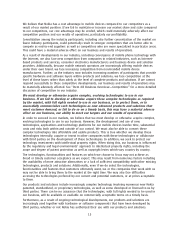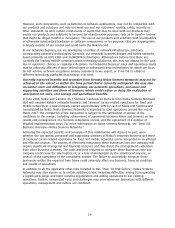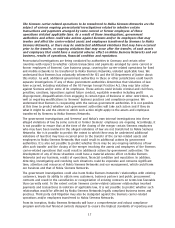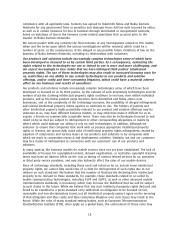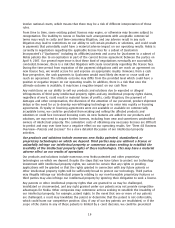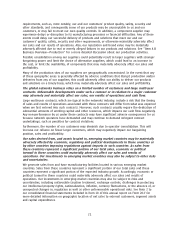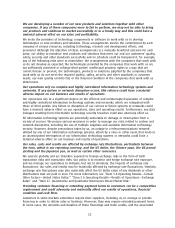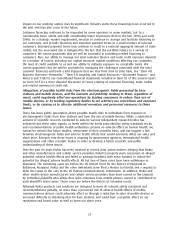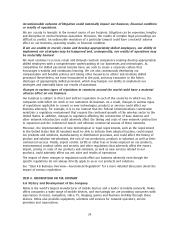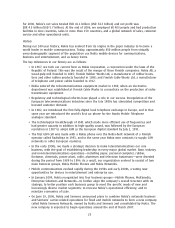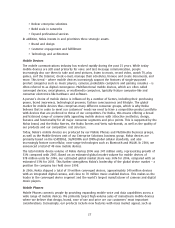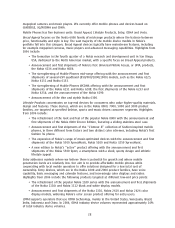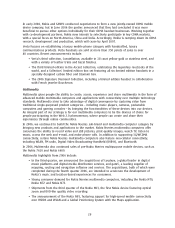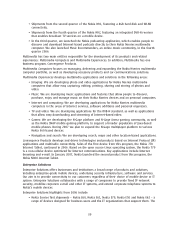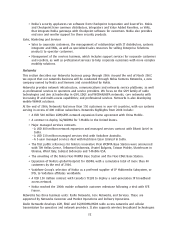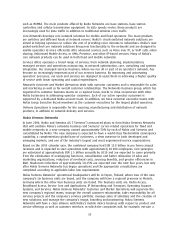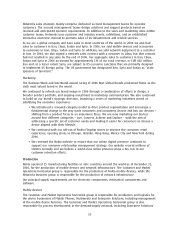Nokia 2006 Annual Report Download - page 26
Download and view the complete annual report
Please find page 26 of the 2006 Nokia annual report below. You can navigate through the pages in the report by either clicking on the pages listed below, or by using the keyword search tool below to find specific information within the annual report.For 2006, Nokia’s net sales totaled EUR 41.1 billion (USD 54.3 billion) and net profit was
EUR 4.3 billion (USD 5.7 billion). At the end of 2006, we employed 68 483 people and had production
facilities in nine countries, sales in more than 150 countries, and a global network of sales, customer
service and other operational units.
History
During our 140 year history, Nokia has evolved from its origins in the paper industry to become a
world leader in mobile communications. Today, approximately 850 million people from virtually
every demographic segment of the population use Nokia mobile devices for communications,
business and entertainment, and as luxury items.
The key milestones in our history are as follows:
)In 1967, we took our current form as Nokia Corporation, a corporation under the laws of the
Republic of Finland. This was the result of the merger of three Finnish companies: Nokia AB, a
woodpulp mill founded in 1865; Finnish Rubber Works Ltd, a manufacturer of rubber boots,
tires and other rubber products founded in 1898; and Finnish Cable Works Ltd, a manufacturer
of telephone and power cables founded in 1912.
)Nokia entered the telecommunications equipment market in 1960, when an electronics
department was established at Finnish Cable Works to concentrate on the production of radio
transmission equipment.
)Regulatory and technological reforms have played a role in our success. Deregulation of the
European telecommunications industries since the late 1980s has stimulated competition and
boosted customer demand.
)In 1982, we introduced the first fullydigital local telephone exchange in Europe, and in that
same year we introduced the world’s first car phone for the Nordic Mobile Telephone
analogue standard.
)The technological breakthrough of GSM, which made more efficient use of frequencies and
had greater capacity in addition to highquality sound, was followed by the European
resolution in 1987 to adopt GSM as the European digital standard by July 1, 1991.
)The first GSM call was made with a Nokia phone over the Nokiabuilt network of a Finnish
operator called Radiolinja in 1991, and in the same year Nokia won contracts to supply GSM
networks in other European countries.
)In the early 1990s, we made a strategic decision to make telecommunications our core
business, with the goal of establishing leadership in every major global market. Basic industry
and nontelecommunications operations—including paper, personal computer, rubber,
footwear, chemicals, power plant, cable, aluminum and television businesses—were divested
during the period from 1989 to 1996. As a result, our organization evolved to consist of two
main business groups, Nokia Mobile Phones and Nokia Networks.
)Mobile communications evolved rapidly during the 1990s and early 2000s, creating new
opportunities for devices in entertainment and enterprise use.
)In January 2004, Nokia reorganized into four business groups—Mobile Phones, Multimedia,
Enterprise Solutions and Networks—to further align the company’s overall structure with its
strategy; to better position each business group to meet the specific needs of new and
increasingly diverse market segments; to increase Nokia’s operational efficiency; and to
maintain economies of scale.
)On June 19, 2006, Nokia and Siemens announced plans to combine Nokia’s networks business
and Siemens’ carrierrelated operations for fixed and mobile networks to form a new company
called Nokia Siemens Networks, owned by Nokia and Siemens and consolidated by Nokia. The
new company is expected to begin operations around the end of March 2007.
25


